- Home
- Jack London
Northland Stories
Northland Stories Read online
Table of Contents
Title Page
Dedication
Copyright Page
Introduction
The White Silence
The Son of the Wolf
In a Far Country
To the Man on Trail
The Wisdom of the Trail
An Odyssey of the North
The God of His Fathers
Siwash
Grit of Women
Where the Trail Forks
The Law of Life
Keesh, the Son of Keesh
The Death of Ligoun
Li Wan, the Fair
The League of the Old Men
The Story of Jees Uck
Love of Life
The Sun-Dog Trail
To Build a Fire
EXPLANATORY NOTES
APPENDIX
FOR THE BEST IN PAPERBACKS, LOOK FOR THE
NORTHLAND STORIES
Jack London—his real name was John Griffith London—had a wild and colorful youth on the waterfront of San Francisco, his native city. Born in 1876, he left school at the age of fourteen and worked in a cannery. By the time he was sixteen he had been both an oyster pirate and a member of the Fish Patrol in San Francisco Bay and he later wrote about his experiences in The Cruise of the Dazzler (1902) and Tales of the Fish Patrol (1905). In 1893 he joined a sealing cruise which took him as far as Japan. Returning to the United States, he travelled throughout the country. He was determined to become a writer and read voraciously. After a brief period of study at the University of California he joined the gold rush to the Kondike in 1897. He returned to San Francisco the following year and wrote about his experiences. His short stories of the Yukon were published in Overland Monthly (1898) and the Atlantic Monthly (1899), and in 1900 his first collection, The Son of the Wolf, appeared, bringing him national fame. In 1902 he went to London, where he studied the slum conditions of the East End. He wrote about his experiences in The People of the Abyss (1903). His life was exciting and eventful. There were sailing voyages to the Caribbean and the South Seas. He reported on the Russo-Japanese War for the Hearst papers and gave lecture tours. A prolific writer, he published an enormous number of stories and novels. Besides several collections of short stories, including Love of Life (1907), Lost Face (1910), and On the Makatoa Mat (1919), he wrote many novels, including The Call of the Wild (1903), The Sea-Wolf (1904), The Game (1905), White Fang (1906), The Iron Heel (1908), Martin Eden (1909), and The Star Rover (1915). Jack London died in 1916, at his home in California.
Jonathan Auerbach, professor of English at the University of Maryland, College Park, is the author of Male Call: Becoming Jack London and The Romance of Failure: First-Person Fictions of Poe, Hawthorne, and James, as well as various articles on American literature and culture.
To my father—J.A.
PENGUIN BOOKS
Published by the Penguin Group
Penguin Group (USA) Inc., 375 Hudson Street, New York, New York 10014, U.S.A.
Penguin Group (Canada), 90 Eglinton Avenue East, Suite 700, Toronto,
Ontario, Canada M4P 2Y3 (a division of Pearson Penguin Canada Inc.)
Penguin Books Ltd, 80 Strand, London WC2R ORL, England
Penguin Ireland, 25 St Stephen’s Green, Dublin 2, Ireland (a division of Penguin Books Ltd)
Penguin Group (Australia), 250 Camberwell Road, Camberwell,
Victoria 3124, Australia (a division of Pearson Australia Group Pty Ltd)
Penguin Books India Pvt Ltd, 11 Community Centre, Panchsheel Park, New Delhi - 110 017, India
Penguin Group (NZ), cnr Airborne and Rosedale Roads,
Albany, Auckland 1310, New Zealand (a division of Pearson New Zealand Ltd)
Penguin Books (South Africa) (Pty) Ltd, 24 Sturdee Avenue,
Rosebank, Johannesburg 2196, South Africa
Penguin Books Ltd, Registered Offices: 80 Strand, London WC2R ORL, England
This volume first published in Penguin Books 1997
Introduction and notes copyright © Jonathan Auerbach, 1997
All rights reserved
LIBRARY OF CONGRESS CATALOGING-IN-PUBLICATION DATA
London, Jack, 1876-1916.
Northland stories / Jack London ; edited with an introduction and
notes by Jonathan Auerbach.
p. cm.—(Penguin twentieth-century classics)
Includes bibliographical references (p. ).
eISBN : 978-1-440-67371-9
I. Auerbach, Jonathan, 1954- . II. Title. III. Series.
PS3523.046A6 1997
813’.52—dc20 96-21720
The scanning, uploading and distribution of this book via the Internet or via any
other means without the permission of the publisher is illegal and punishable by law.
Please purchase only authorized electronic editions, and do not participate in or encourage
electronic piracy of copyrighted materials. Your support of the author’s rights is appreciated.
http://us.penguingroup.com
INTRODUCTION
In the summer of 1897 Jack London left San Francisco to seek his fortune in the Klondike, where gold had recently been discovered. Seventy-two years later, in 1969, a group of men set out to retrace the young man’s adventures in the Yukon wilderness. Locating the very cabin in which the twenty-two-year-old stayed during the long winter, the expedition authenticated an extraordinary find: a log in a cabin wall still bearing the handwritten scrawl “Jack London. Miner, author, Jan. 27, 1898.” By way of this signature, the aspiring writer had symbolically staked a claim to a small piece of the Yukon territory—a claim all the more revealing for its joining together the vocations of gold mining and writing.
Even though Jack London stayed less than a year in the Klondike and discovered no fortune, his trip to the Yukon proved invaluable. Soon after his return to California, he published in yearly succession three collections of Northland stories—The Son of the Wolf (1900), The God of His Fathers (1901), and Children of the Frost (1902), to be quickly followed by his wildly successful novel The Call of the Wild (1903). The site of his initial fame as a writer, the Far North remains today in the popular imagination closely linked with the name Jack London. Making his mark in testimony to his twin ambitions of finding Eldorado and becoming an author, the young man who whiled away the cold, dead winter by dreaming of wealth thus proved to be more prophetic than he could ever have hoped or expected.
Yet our childhood memories play tricks on us if we recall only London’s fictional Northland filled with the extended adventures of gold miners and their furry counterparts. Most of these early tales detail strenuous toil and pursuit, not digging for gold, activities that spoke profoundly to turn-of-the-century American anxieties about masculinity and racial identity, as I demonstrate shortly. Rather than directly associate London’s interest in mining with events rendered in his stories, we therefore need to regard the vocation of prospecting more in terms of London’s perceived prospects as a successful man of letters—a business every bit as risky and prone to failure as searching for nuggets of gold.
At the turn of the last century the chances of making it as a professional author in the United States were about as slim as striking it rich in the Yukon. Like gold mining, writing for a living was clearly a long shot, but occasionally offered the talented, diligent, and lucky few quite a sizable income. The explosive growth of publishing in the 1890s triggered a Gold Rush of another sort, helping a number of authors such as Mark Twain and Rudyard Kipling to reach a kind of celebrity status thanks to new methods that mass-marketed, distributed, and promoted books and magazines. But for every best-selling author earning hundreds of thousands of dollars, there were scores of would-be writers who received no
thing but rejection slips. The rate of acceptance for mass-circulation magazines such as the Ladies’ Home Journal, for example, hovered around 4 percent, presenting daunting odds indeed for any literary aspirant setting out to make a name from scratch.
These facts of failure and success were not lost on Jack London, who as early as 1893 was awarded twenty-five dollars in an amateur writing contest sponsored by a local San Francisco newspaper. At the time he was working in a jute mill earning ten cents an hour, so that his prize money for a single short sketch written over a period of a few days represented roughly the equivalent of a month’s pay as a wage slave. Having toiled since the age of fifteen at a series of tedious, low-paying jobs—in a cannery, a power plant, and a laundry, in addition to the jute mill—Jack London had decided by 1897 (the year he headed up north) to abandon manual labor in order to try his hand at another kind of occupation, to be a “brain merchant,” as he dubbed the work of the writer.
London’s experience in the Yukon was crucial for his literary apprenticeship, not because it afforded him much direct raw material for his writing, but rather because it gave him a special sense of place—a figurative terrain that he could imaginatively make his own. As Richard Brodhead has recently pointed out, during the late nineteenth century the important literary mode of regional writing became a crucial way for unknown, disenfranchised American writers such as London to gain access to centers and institutions of publishing otherwise unavailable to them.1 These writers made up for their lack of cultural clout—traditionally defined in terms of college and business connections, social status, or professional training—by cashing in on their presumed authentic expertise representing particular places and particular ways of life that genteel middle-class readers, armchair tourists as it were, often found especially attractive.
As one such specialized region, the Far North thus enabled Jack London to forge a unique authorial identity for himself. He could construct such a trademark self, London realized, only in conjunction with a trademark locale. In his early letters to friends expressing his professional ambitions, he often called this regional work a brand-new literary “field” awaiting the author’s “exploitation.” With the key term “field” London connected the space imagined inside the fiction with the space in the writer’s market that he hoped to occupy by successfully placing these stories set exclusively in the Klondike.
Beyond the question of access to publishing, literary regionalism afforded aspiring authors other tangible benefits as well. Following the career trajectory of many other young writers, Jack London began his literary apprenticeship by sending out individual short stories, poems, and essays to an array of established and obscure periodicals, hoping to make his reputation by gradually building up a loyal following of magazine readers. Such magazines paid their contributors piecemeal, often by the word, with rates for beginners ranging from as low as one dollar to ten dollars or perhaps twenty dollars per thousand words. Such a system of literary pay and production turned authors into independent entrepreneurs (like miners working in gold fields), each struggling to break into the writers’ market.
Recognizing the shaky financial status of magazine work, as well as the ephemeral, fragmentary nature of magazine print, London also aspired to publish books—a more enduring, prestigious, and lucrative medium. Regionalism offered writers one crucial means to move from magazines to books by allowing them to conceive of their shorter, discrete productions as potentially part of a greater whole unified by a single sense of place. Needing a steady income to pay his bills, London could take his chances on monthly piecemeal magazine placement and still hope for a second, larger bonus to come: a collected volume; in effect being paid twice for these same stories.
From an aesthetic point of view regional writing could also give authors greater control over their productions. Pieces that were often cut and maimed by magazine editors worrying about length could be restored to their proper condition as parts of a coherent body of work, thereby reinforcing the integrity of the author himself. Consider, for instance, London’s first big breakthrough. In August 1899 his long, ambitious Klondike tale “An Odyssey of the North,” was accepted by the prestigious Atlantic Monthly, which had been publishing regional writing since the Civil War. The magazine offered London the prodigious sum of $120 if he was willing to shorten the story’s opening by three thousand words, which he quickly agreed to do. Within a few months his first collection of nine Klondike stories, The Son of the Wolf: Tales of the Far North, had been accepted for book publication by the equally prestigious publisher Houghton, Mifflin, with the concluding tale “An Odyssey of the North” returned to its original state.
London’s triumph was largely a matter of timing, combined with a shrewd submission strategy. Just as he was beginning to shop around for a book publisher in the summer of 1899, London stopped publishing his Klondike stories in the local San Francisco magazine Overland Monthly (once edited by Bret Harte) to try for greater national exposure. More pointedly, the publishing house Houghton, Mifflin actually owned the Atlantic Monthly, whose influential editor William B. Parker was so impressed with “An Odyssey of the North” that he recommended London’s entire volume when London submitted it to Houghton, Mifflin soon thereafter. Grasping the intimate relationship between a respected magazine and its parent company, London was thus able to parlay their acceptance of his short stories into a book contract.
As the example of “An Odyssey of the North” shows, London’s early successes as a writer to a large extent derived from his knack for seizing the opportunities presented by turn-of-the-century publishing’s multiple venues. From the very start of his career, London regarded virtually all of his pieces as potential parts of books; in the back of an early notebook recording magazine submissions, rejections, and acceptances, the young writer spent page after page trying to organize previously published works, listed by title and word count, into various groupings—“Hints on Writing,” “Economic Essays,” “Future Tales,” and, of course, “Klondike Tales”—that would each add up to a book. Set in one particular region, London’s Yukon material was particularly apt to be construed as a “series,” as he himself called this writing. After his Northland story “To the Man on Trail” was accepted by the Overland Monthly in December 1898 (mistitled and for the paltry sum of five dollars), the editor, James Howard Bridge, encouraged London to submit more work in the same vein as a kind of package deal. Bridge even began numbering London’s story subtitles consecutively as they appeared monthly in order to remind his magazine’s readers that London’s stories constituted a continuing Northland saga.
Both Bridge and London understood that these stories needed more than just a common setting to make them cohere as a series. Following the practice of other regionalists, particularly popular writers of Westerns, London organized his Overland magazine stories around a recurring character, the “Malemute Kid,” who would end up appearing in seven out of the nine tales collected in The Son of the Wolf. A hardened veteran of the Klondike, the Kid initially served as the presiding moral center of London’s fictional Northland. In his various roles as arbiter of disputes, sympathetic auditor, and main actor, the Malemute Kid offered London’s magazine readers an exemplary source of manly strength and wisdom. Yet despite Bridge’s enthusiasm for the Kid, London in his letters to friends betrayed a certain impatience with his own creation, who bore a perilously close resemblance to stock frontier figures peopling so many dime novel Westerns and detective stories produced during the 1870s, ‘80s, and ’90s. This dime novel mode of publishing was frequently modeled after factory production, with authors anonymously or pseudonymously churning out stories and novels dominated by trademark protagonists such as Deadwood Dick, Old Sleuth, and Nick Carter. In many cases these character types became the legal property of the publishers who hired the writers, and not the writers themselves.
Jack London simply would not allow a fictional protagonist—even one of his own devising—to overshadow his potenti
al fame as a man of letters. Beyond character and setting, he searched for a way to impress upon these Northland tales his unique authorial personality, what he termed (in an 1899 advice essay addressed to other literary aspirants) the writer’s “stamp of ‘self’.” In this respect the instrumental tale bearing such a stamp remains “The White Silence,” which appeared second in the Overland series, but which London pointedly selected to lead off his first collected volume, The Son of the Wolf. Titled “A Northland Episode” when first submitted to Godey’s on October 4, 1898, the story’s far more suggestive revised title derives from a passage midway through the narrative. Recounting the desperate race of the half-starving Malemute Kid, a companion named Mason, and his Indian wife, Ruth, on trail across the frozen wilderness, London pauses to offer a context for their toil: “with the awe, born of the White Silence, the voiceless travelers bent to their work.”
In the course of narrating the subsequent sacrifice of one of these three characters for the sake of the other two, London repeats four times this capitalized expression. This recurring signature phrase, “the White Silence,” designed to establish the author’s strong individual presence (his and his alone) at the same time that it figuratively registers an atmosphere of menace and wonder governing the Northland landscape, also appears at key moments in other stories throughout the collection. The phrase clearly maps a state of mind, not a geography—a mood in which the activity of work speaks louder than words. Here we can see how London’s concept of a fictional “field” is more interesting and innovative than a mere “series,” looking forward to modernist short story cycles such as Jean Toomer’s Cane (1923) and Hemingway’s In Our Time (1925), whose discrete parts are unified by lyrical abstractions beyond specific place or people or plot.

 The Son of the Wolf
The Son of the Wolf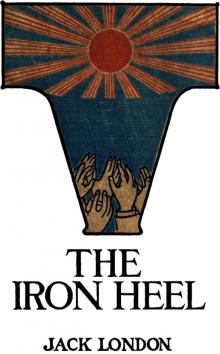 The Iron Heel
The Iron Heel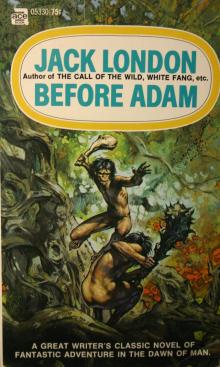 Before Adam
Before Adam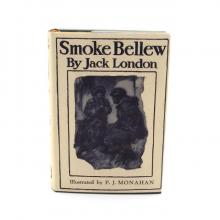 Smoke Bellew
Smoke Bellew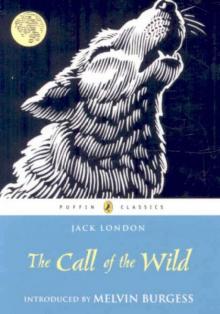 The Call of the Wild
The Call of the Wild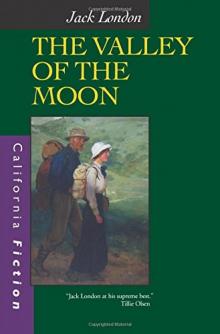 The Valley of the Moon Jack London
The Valley of the Moon Jack London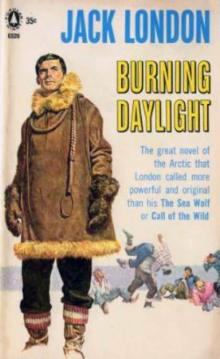 Burning Daylight
Burning Daylight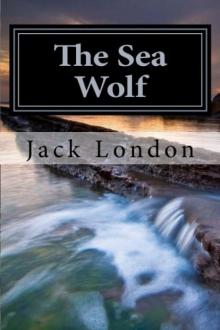 The Sea Wolf
The Sea Wolf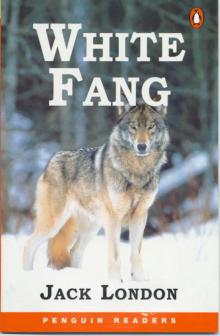 White Fang
White Fang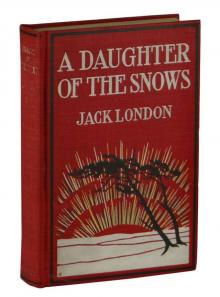 A Daughter of the Snows
A Daughter of the Snows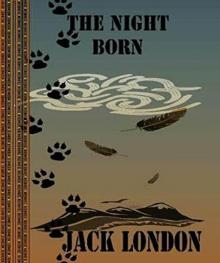 The Night-Born
The Night-Born A Son Of The Sun
A Son Of The Sun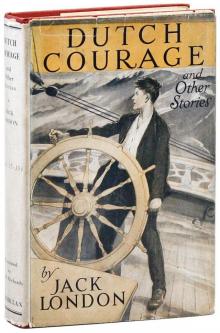 Dutch Courage and Other Stories
Dutch Courage and Other Stories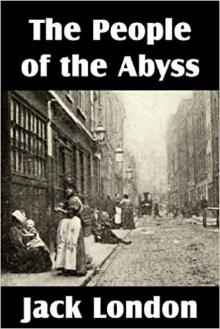 The People of the Abyss
The People of the Abyss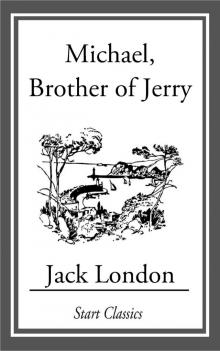 Michael, Brother of Jerry
Michael, Brother of Jerry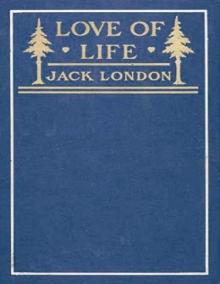 Love of Life, and Other Stories
Love of Life, and Other Stories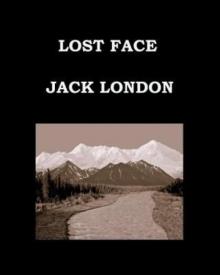 Lost Face
Lost Face The Road
The Road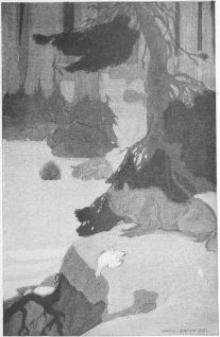 Love of Life
Love of Life The Turtles of Tasman
The Turtles of Tasman The Cruise of The Dazzler
The Cruise of The Dazzler The Heathen
The Heathen The Scab
The Scab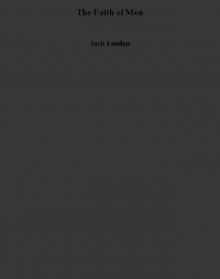 The Faith of Men
The Faith of Men Adventure
Adventure The Assassination Bureau, Ltd.
The Assassination Bureau, Ltd.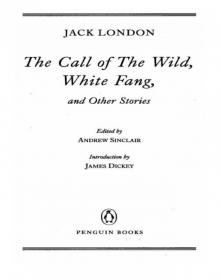 The Call of the Wild, White Fang, and Other Stories
The Call of the Wild, White Fang, and Other Stories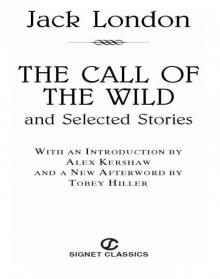 The Call of the Wild and Selected Stories
The Call of the Wild and Selected Stories Jerry of the Islands
Jerry of the Islands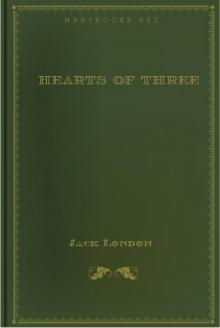 Hearts of Three
Hearts of Three The House of Pride
The House of Pride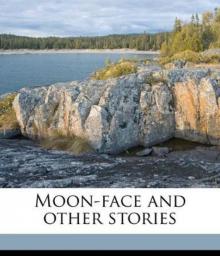 Moon-Face and Other Stories
Moon-Face and Other Stories Children of the Frost
Children of the Frost South Sea Tales
South Sea Tales The Strength of the Strong
The Strength of the Strong The Jacket (The Star-Rover)
The Jacket (The Star-Rover) The Little Lady of the Big House
The Little Lady of the Big House John Barleycorn
John Barleycorn ADaugter of Snows
ADaugter of Snows The Mutiny of the Elsinore
The Mutiny of the Elsinore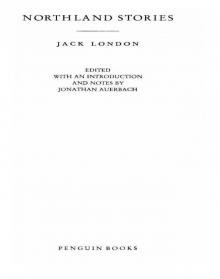 Northland Stories
Northland Stories Tales of the Fish Patrol
Tales of the Fish Patrol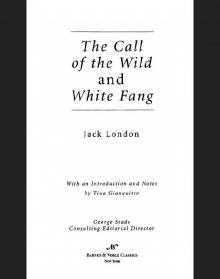 Call of the Wild and White Fang (Barnes & Noble Classics Series)
Call of the Wild and White Fang (Barnes & Noble Classics Series)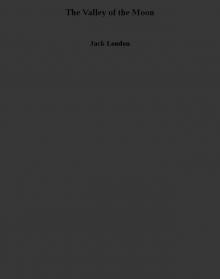 The Valley of the Moon
The Valley of the Moon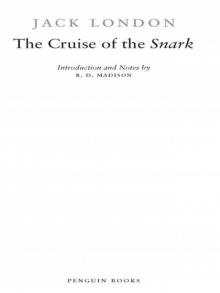 The Cruise of the Snark
The Cruise of the Snark The Game
The Game An Autobiography of Jack London
An Autobiography of Jack London